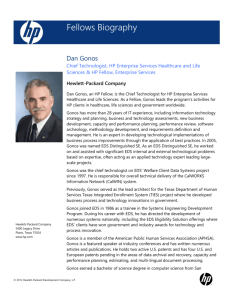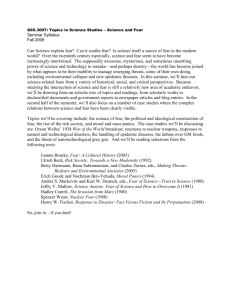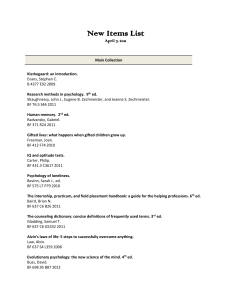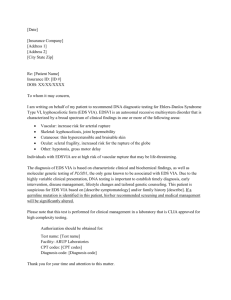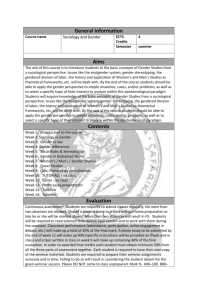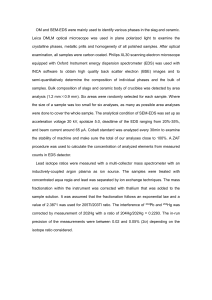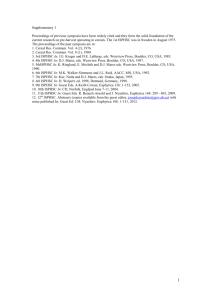Identifying Emergency Department Efficiency Frontiers and
advertisement
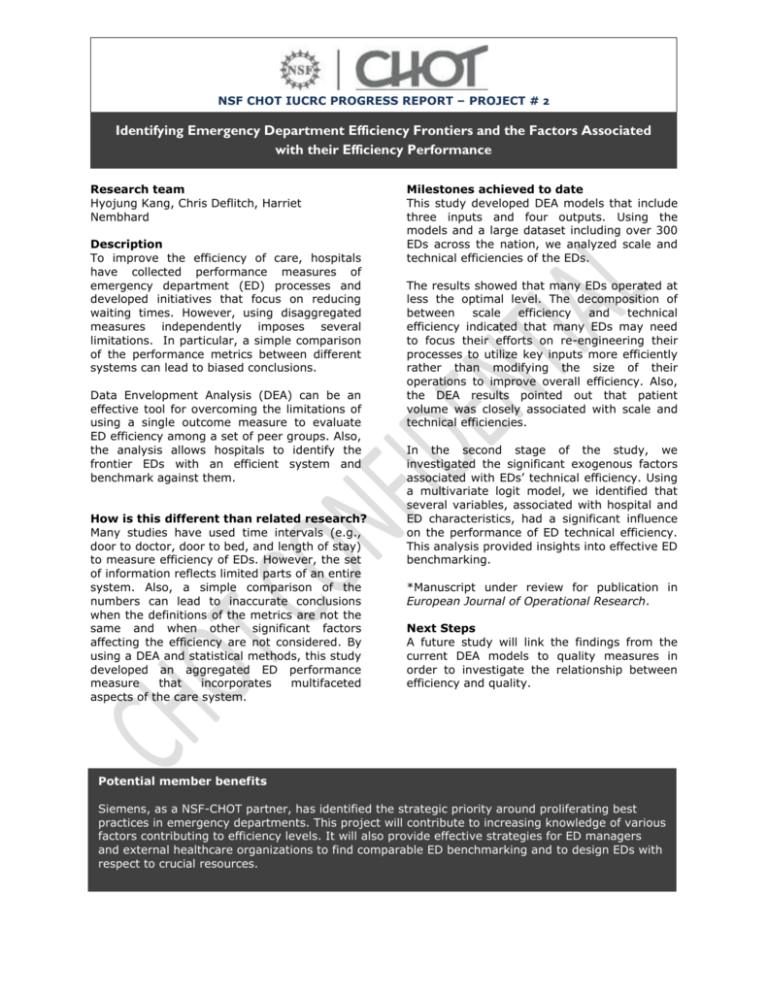
NSF CHOT IUCRC PROGRESS REPORT – PROJECT # 2 Identifying Emergency Department Efficiency Frontiers and the Factors Associated with their Efficiency Performance Research team Hyojung Kang, Chris Deflitch, Harriet Nembhard Description To improve the efficiency of care, hospitals have collected performance measures of emergency department (ED) processes and developed initiatives that focus on reducing waiting times. However, using disaggregated measures independently imposes several limitations. In particular, a simple comparison of the performance metrics between different systems can lead to biased conclusions. Data Envelopment Analysis (DEA) can be an effective tool for overcoming the limitations of using a single outcome measure to evaluate ED efficiency among a set of peer groups. Also, the analysis allows hospitals to identify the frontier EDs with an efficient system and benchmark against them. How is this different than related research? Many studies have used time intervals (e.g., door to doctor, door to bed, and length of stay) to measure efficiency of EDs. However, the set of information reflects limited parts of an entire system. Also, a simple comparison of the numbers can lead to inaccurate conclusions when the definitions of the metrics are not the same and when other significant factors affecting the efficiency are not considered. By using a DEA and statistical methods, this study developed an aggregated ED performance measure that incorporates multifaceted aspects of the care system. Milestones achieved to date This study developed DEA models that include three inputs and four outputs. Using the models and a large dataset including over 300 EDs across the nation, we analyzed scale and technical efficiencies of the EDs. The results showed that many EDs operated at less the optimal level. The decomposition of between scale efficiency and technical efficiency indicated that many EDs may need to focus their efforts on re-engineering their processes to utilize key inputs more efficiently rather than modifying the size of their operations to improve overall efficiency. Also, the DEA results pointed out that patient volume was closely associated with scale and technical efficiencies. In the second stage of the study, we investigated the significant exogenous factors associated with EDs’ technical efficiency. Using a multivariate logit model, we identified that several variables, associated with hospital and ED characteristics, had a significant influence on the performance of ED technical efficiency. This analysis provided insights into effective ED benchmarking. *Manuscript under review for publication in European Journal of Operational Research. Next Steps A future study will link the findings from the current DEA models to quality measures in order to investigate the relationship between efficiency and quality. Potential member benefits Siemens, as a NSF-CHOT partner, has identified the strategic priority around proliferating best practices in emergency departments. This project will contribute to increasing knowledge of various factors contributing to efficiency levels. It will also provide effective strategies for ED managers and external healthcare organizations to find comparable ED benchmarking and to design EDs with respect to crucial resources.

